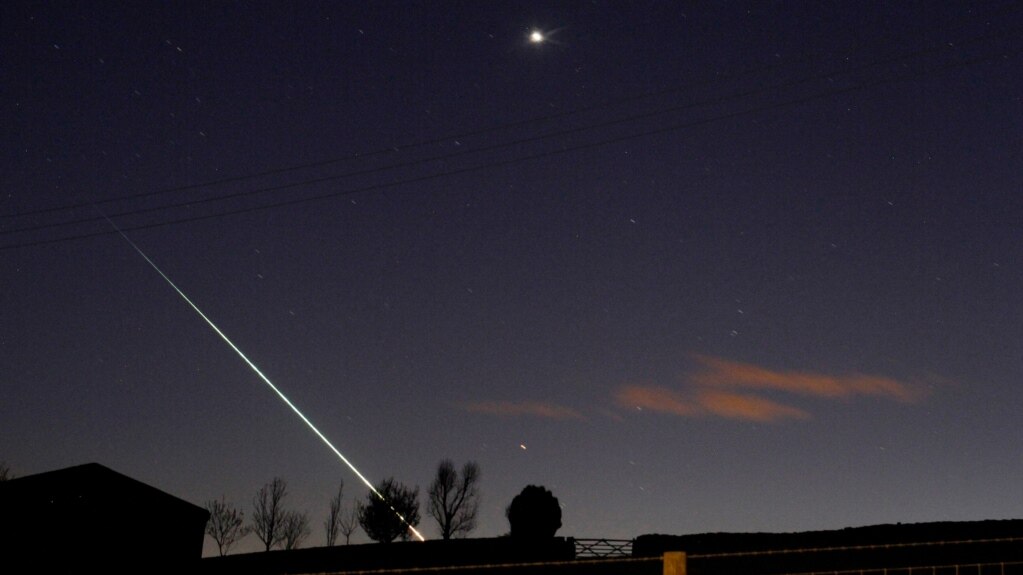A small asteroid was discovered recently, just days before it passed close to Earth. The object was never considered a real threat to our planet. But the discovery has raised questions about whether current systems used to identify possibly threatening objects might leave a blind spot for some objects.
NASA and its international partners continuously search the skies for what scientists call near-Earth objects. Such objects include asteroids and comets that come within 50 million kilometers of Earth’s orbit.
The American space agency NASA announced January 25 that an asteroid about the size of a large truck would pass very close to Earth the very next day. The agency said the object, called 2023 BU, was expected to make one of the closest trips past Earth ever recorded.
NASA said the asteroid was discovered January 21 by an amateur astronomer based in the Russian-occupied Ukrainian territory of Crimea. The astronomer, Gennady Borisov, is a telescope maker and operates his own observatory. He is credited with discovering an interstellar comet in 2019.
Additional observations of 2023 BU were then reported to an internationally recognized organization, the Minor Planet Center, which records the current positions of near-Earth objects. The data was added to the Near-Earth Object Confirmation Page.
NASA said that in the days leading up to the asteroid’s flyby, a number of observatories around the world were able to confirm the position of the object. This helped astronomers follow 2023 BU’s orbit.
Davide Farnocchia is an engineer and planetary defense expert at NASA’s Jet Propulsion Laboratory in California. He said in a statement that the agency was quickly able to rule out an asteroid strike.
NASA said the asteroid passed within 3,600 kilometers of Earth, above the southern tip of South America. That distance is 10 times closer than numerous satellites orbiting Earth.
Scientists said that even if the space rock came a lot closer to Earth, it would have burned up in the atmosphere. In that case, a few bigger pieces might have fallen to Earth as meteorites.
In general, NASA believes the probability of Earth being struck by a space rock is very low. Astronomers estimate that a space rock of 5-meters in length targets Earth once a year. And a 50-meter rock is estimated to target Earth once every 1,000 years.
But existing systems used to identify near-Earth objects have difficulty finding smaller ones. Asteroid 2023 BU was on the smaller end of a grouping of objects between 5 to 50 meters. Scientists say objects that size are difficult to identify until they get much closer to Earth. This makes it difficult to prepare for an object that might be heading for a populated area.
"We don't know where most of the asteroids are that can cause local to regional devastation," Terik Daly told Reuters news agency. He is a planetary scientist at the Johns Hopkins Applied Physics Laboratory in Maryland.
Some astronomers have proposed using new tools to identify near-Earth objects rather than depending on probability estimates and existing asteroid populations.
Daly noted that new identification tools could help scientists deal with a possibly dangerous asteroid event. "How many natural hazards are there that we could actually do something about and prevent for a billion dollars? There's not many," he said.
NASA is already planning to launch a new infrared space telescope designed to support current planetary defense efforts. The Near-Earth Object Surveyor is currently still in development and is set to launch in 2026. NASA officials have said the telescope promises a major improvement over existing ground-based models limited by daytime light and the effects of Earth's atmosphere.
Last year, NASA carried out the first-ever planetary defense test when it crashed a spacecraft into an asteroid. The test successfully changed the path of an asteroid named Dimorphos.
I’m Bryan Lynn.
The Associated Press reported this story. Bryan Lynn adapted the report for VOA Learning English.

